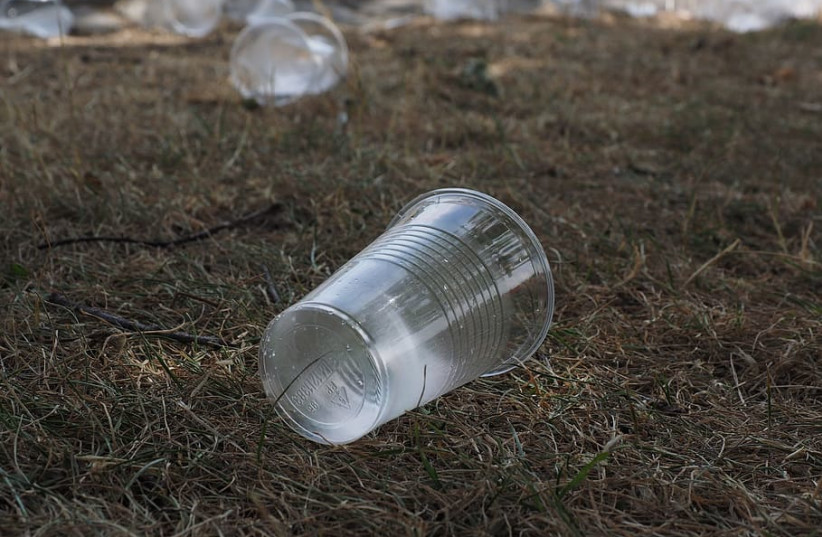Substituting single-use plastic cups with their paper counterparts is not a solution to the environmental destruction and health hazards that disposal products cause, according to research published on Friday.
Findings from the University of Gothenburg published in Environmental Pollution reveal that paper cups, once discarded in the environment, can cause harm due to toxic chemicals. In their study, researchers examined the impact of disposable cups crafted from various materials on butterfly mosquito larvae, discovering that paper and plastic cups exhibited comparable levels of toxic damage.
“The coffee latte you take with you from the kiosk on the corner now comes in paper cups, sometimes even with paper lids. But that cup can also harm living organisms if it ends up in nature,” a release on the research said.
“Paper cups are viewed as biodegradable or eco-friendly alternatives, often via greenwashing campaigns,” the researchers wrote.
The researchers explained that paper used in food packaging lacks resistance to fats and water, requiring the application of a surface coating to enhance its performance. This coating, typically made of plastic material, safeguards the paper from contact with substances like coffee.

Even biodegradable plastics can be toxic
In contemporary packaging, this plastic film is frequently composed of a bioplastic known as polylactide (PLA). Unlike conventional plastics derived from fossil fuels, bioplastics like PLA are sourced from renewable materials, such as corn, cassava, or sugarcane. While PLA is often considered biodegradable, indicating its ability to break down more rapidly than traditional oil-based plastics under specific conditions, recent research suggests that it can still possess toxic properties.
“Bioplastics do not break down effectively when they end up in the environment, in water. There may be a risk that the plastic remains in nature, and resulting microplastics can be ingested by animals and humans, just as other plastics do. Bioplastics contain at least as many chemicals as conventional plastic,” said lead researcher Bethanie Carney Almroth, professor of Environmental Science at the Department of Biology and Environmental Science at the University of Gothenburg.
“We left paper and plastic cups in wet sediment and water for a few weeks and followed how the leached chemicals affected the larvae. All of the mugs negatively affected the growth of mosquito larvae.”
The team used Chironomus Riparius, because they said it is “a model species for toxicological studies that represent an important group of aquatic organisms which are vital to ecosystem health.”
Specifically, the team aimed to compare the potential toxicity of traditional plastic cups and lids with paper cups. They conducted a series of leaching experiments using varied conditions to achieve this. They assessed both immediate and prolonged toxic effects on Chironomus Riparius.
THE RESEARCHERS generated leachates from different types of beverage containers: plastic cups (polypropylene), lids (polystyrene), and paper cups (lined with polylactic acid). These leaching processes were conducted to mimic the release of chemicals from plastics into the environment. These items were immersed in sediment and freshwater for up to four weeks to facilitate leaching. Subsequently, they assessed the toxicity of the contaminated water and sediment separately. They also examined the Chironomus Riparius for various indicators at the larval stages and the transition to adulthood.
“Plastic debris is a major concern; it now pollutes every ecosystem on the planet,” the researchers wrote. “Use of food packaging materials and associated production of solid waste increased during the COVID-19 pandemic. This is in direct conflict with the goals of the directives of the European Union, implementing bans on the top 10 most commonly found single-use plastic items on European beaches to reduce the environmental impacts of these plastic products.
“A recent study identified 10,000 substances used in plastics, such as monomers, additives, and processing agents,” the team continued. “More than 2,400 (24%) of the identified substances are known to have hazardous properties, but 901 are still used in food contact plastics.”
Last year, the United Nations member states agreed to start negotiating a new global treaty to end plastic pollution. In contrast, the government has taken steps to increase access to disposable goods in Israel.
Finance Minister Bezalel Smotrich repealed a tax put in place by the previous government that added tax to disposables to ease the financial burden on large families. However, what families are saving in their pocketbooks is costing Israel environmentally.
The NGO Zalul showed that after the tax was enacted, single-use consumption from October 2021 to September 2022 went down 32%.
Researcher Almorth concludes: “Now, we need to shift back and move away from disposable lifestyles. It is better if you bring your own mug when buying takeaway coffee. Or, by all means, take a few minutes, sit down and drink your coffee from a porcelain mug.”
She and her colleagues added in their paper, “We cannot afford to only replace one material (i.e., plastic cups) with another (i.e., paper-based products) but rather must reduce consumption and use of single-use products overall.”
